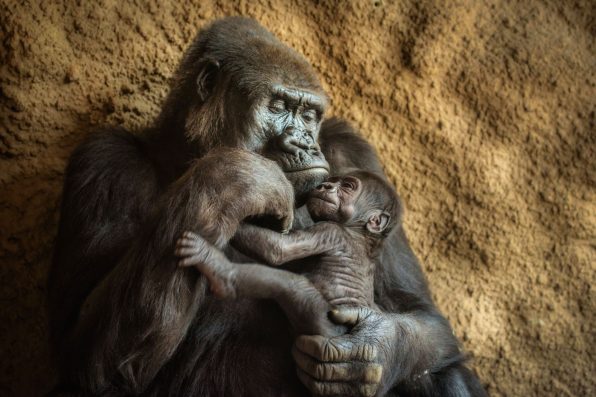On July 3, 2024, the Columbus Zoo announced the news of the birth of a baby western lowland gorilla to first-time mom Sue and dad Ktembe. The baby was born in late June. The zoo also shared three heartwarming photos of the precious newborn.
In the first photo, Sue is looking at the camera while cradling her baby in her arms. The baby is staring adoringly at its mother.
It is not yet known what the gender of the baby is, as the staff members are trying to keep a respectful distance to let the newest addition to the family acclimate to the environment.
“Sue is being an amazing mom, cuddling and caring for her newborn with lots of love. To give them some privacy and bonding time, we’ll find out if the baby is a boy or a girl a little later,” wrote the zoo in the post.
Starting on July 8, visitors will be allowed to meet the baby gorilla during certain hours of the day. They are limiting visits to ensure that the family continues to bond properly. The other two photos were close-ups of the newborn.
This baby is the 35th gorilla to be born at Columbus Zoo. Its birth is significant for the future of the western lowland gorilla species because they are listed as critically endangered on the International Union for Conservation of Nature’s (IUCN) Red List of Threatened Species.
Western lowland gorillas are distributed across the Congo Basin and the countries of Angola, Cameroon, Central Africa Republic, Gabon, Equatorial Guinea, and Congo. They are likely now extinct in the Democratic Republic of Congo.
“The country of Gabon lost over half its gorilla population between 1983 and 2000. More recent population declines have been estimated using a predictive model that incorporated survey data collected between 2003 and 2013 across the entire range of Western Lowland gorillas,” explained the IUCN.
The model found that between 2005 and 2013, there was a 19.4 percent decline, which corresponded to an annual loss of approximately 2.7 percent.

Sign up for Chip Chick’s newsletter and get stories like this delivered to your inbox.


